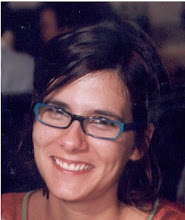Aqui fica algumas das referências para o meu projecto ( com o devido atraso! )
Pesquisa_Projecto
Palavras-Chave:
Memorial; Monumento; arquivo; base de dados;
Reprodução e distribuição de conhecimento.
Museu imaginário – André Malraux
From the musée imaginaire to the virtual museum by Antonio M. Battro
Le musée imaginaire
Malraux in his celebrated book Le musée imaginaire developed the idea that the world of reproductions forms a "museum without walls". This notion has a long tradition in the arts. Engravings of canvases of great masters, plaster casts of famous sculptures, reduced models of architectures and other kinds of reproductions have extended the much restricted realm of the original pieces. Some of the reproductions became, in turn, genuine masterworks. Goethe used to invite his friends to visit his "private gallery" of reproductions of the classical masters, many generations of sculptors have studied at the large collections of casts of the Academias.
In particular, the introduction in the last century of photography as a new art made a revolution in the old field of reproductions. A new industry developed with enormous success. From the old black and white postcards of the Alinari collection in Italy to postwar fabulous colours of the Skira editions in Switzerland and the further advances in printing and editing, the museum without walls has opened to visitors of all countries thousands of galleries and exhibitions. We can now add the films, videos and CD-roms that have such a strong presence in contemporary art. But the best reproduction is never a substitution for the original.
The limits of scale
We all know that size is an essential component of every piece of art. A sculpture can loose its original colour or even a whole fragment of matter and still continue to be a work of art. But the size, instead, is intrinsic to the object of art and cannot be manipulated without a deep transformation of its aesthetic value. This is why some artists have experimented with changes of scale. The enlarged bronze of César's thumb is a good example. And the change of scale becomes a major problem when a reduction of size is imposed by the reproduction itself. This is perhaps the greatest disadvantage of the imaginary museum. The book format, the poster size, the TV screen, the computer monitor. all of them impose a very strong restriction to Malraux's dream as far as scale is concerned.
Only the advanced digital technologies known as "virtual reality" or VR can offer a way out to the dilemma of scale in the visual arts. In fact, with the aid of special instruments, goggles and helmets, the observer can have a total immersion in a virtual space as compelling as the real one. The success of aircraft or surgery simulators proves how well our brain processes virtual reality as an entirely new field of productive activities and genuine perception. The same results should be expected in the arts.
The virtual museum
Nobody can deny that one of the greatest revolutions of this century has been the computer and the telecommunication networks. Their impact in every aspect of our life is a matter of awe, fear or admiration, depending on the circumstances. In the arts we have definitively entered into "the digital era". Most museums of art nowadays have a site on the world wide web, they are "published" on Internet. The museums have "opened their walls" to the great public - following Malraux's wish - to millions of visitors that can now enjoy the major works of art of the whole world at the tip of their fingers, on the monitor of their computer or on the enlarged screen of a digital projector. The digital technologies in the arts are still in their first stages as creative tools but as far as the museums are concerned the use of Internet has already produced a profound change.
The museum on the web is a different kind of museum. It is certainly not a substitution of the real museum, it is a new museum! To attain the highest possible quality, a state-of-the art Virtual Museum, a new approach to Malraux's ideas about the Imaginary Museum should be carefully considered. The problem is not only to "digitise" everything that is worthy of publication on the web but to produce new contents, to propose new activities, to explore new links within the arts.
And last but not least, some Internet pages of celebrated museums are also becoming works of art in themselves. A new goddess is born in the Museum, the House of the Muses. Her virtual name is Dactylia, she is certainly a most dear and gentle muse.
Assassinios Narrados – Michel Foucault ( livro Eu, Pierre Riviere....)
-O texto como uma peça do processo
-Duplicar ( reproduzir) o seu crime aravés de uma narrativa
-Depositar na memória
A Obra de arte na era de reprodutibilidade de técnica – Walter Benjamin
Archive in the digital age
The Archive, the Media, the Map and the Text - Rudolf Frieling
Arquivos e a sua disponibilidade; organização de conteúdos; distribuição de conhecimento.
Index - Compilar, organizar, distribuir ( com a tecnologia torna-se móvel ) segundo uma ordem definida pelo seu autor.
Modos de perpetuar, pervalecer na história:
-Monumento ( arquitectura)
- Narrativa ( literatura e poesia )
- Reprodução do original ( imagem )
- Memória Popular ( mito)
Querido, mudei a casa!
Há 16 anos

1 comentário:
Archive Fever do Derrida e Arqueologia do Saber do Foucault.
E no entanto...
Se calhar já tem até referências a mais e talvez falte um ponto de vista seu (dito de um modo simplista).
O que, para si, tem interesse neste universo?
Enviar um comentário